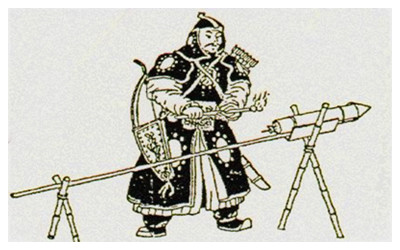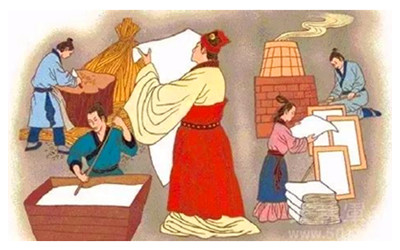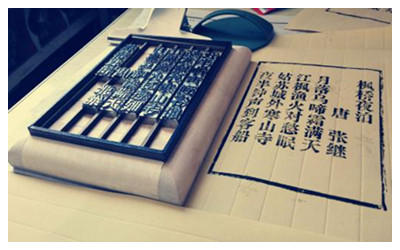
Four Great Inventions
Four Great Inventions in ancient China is a view on the history of Chinese science and technology, refers to the ancient Chinese four inventions which have a great impact on the world. It is an important creation of the ancient Han Chinese working people, generally refers to the paper, the compass, gunpowder, and woodblock printing. What are the Chinese four great inventions in ancient times?
The Compass
 Compass is a simple instrument to determine orientation. The main component is the one needle mounted on the shaft free to rotate. Needle influenced by the earth magnetic field can be maintained in the direction of the magnetic meridian. The north point of the needle point to the geographic North Pole South Pole, you can take advantage of this capability to identify the direction. Commonly used in navigation, geodesy, travel and military fields. N refers to the compass north, E refers to the East, and W refers to the West, S Guide square.
Compass is a simple instrument to determine orientation. The main component is the one needle mounted on the shaft free to rotate. Needle influenced by the earth magnetic field can be maintained in the direction of the magnetic meridian. The north point of the needle point to the geographic North Pole South Pole, you can take advantage of this capability to identify the direction. Commonly used in navigation, geodesy, travel and military fields. N refers to the compass north, E refers to the East, and W refers to the West, S Guide square.China is a country recognized by the invention Compass in the world. Invention of the compass is the result of working people in the Chinese Han long-term practice of understanding of magnetic objects. Because of productive labor, people contact the magnetite, and began to understand the magnetic properties. It was first discovered by a magnet attracts iron nature, and later found a magnet directivity. After many experiments and research, and finally invented a practical compass.
Gunpowder
 Gunpowder is a black or brown explosives, composed by potassium nitrate, charcoal and sulfur mechanical mixing, initially were powdered, after generally made of different granular size which has been available for different purpose. Before the use of non-pyrotechnic, gunpowder has been used as the sole military propellant.
Gunpowder is a black or brown explosives, composed by potassium nitrate, charcoal and sulfur mechanical mixing, initially were powdered, after generally made of different granular size which has been available for different purpose. Before the use of non-pyrotechnic, gunpowder has been used as the sole military propellant.Gunpowder is invented Han Chinese alchemists in Sui and Tang dynasties, dating back more than a thousand years. Gunpowder research began in ancient Taoist alchemy, ancient people refining medicines for the sake of immortality. Its purpose and motivation are ahead, but it's still experimental method has merit, and finally led to the invention of gunpowder.
Europeans only know about the role of gunpowder in the 13th century, and through the development and improvement of several centuries, mainly granular invention of gunpowder and fire caps, black powder weapons is gradually replacing cold weapons. Gunpowder resulted in a revolutionary impact on land war tactics, siege all aspects of fortification technology and the development of naval battleships and tactics. But as the explosives and propellants, black powder was gradually replaced by these smokeless powder, TNT, picric explosives PETN, RDX.
Papermaking Technology
 Papermaking is one of China's four great inventions, an outstanding inventions in the history of human civilization. Papermaking (also called Cai Hou paper) was improved by Cai Lun. In 105 AD, Cai Lun used silk crystal, bark, broken nets, rags, linen as raw materials on the basis of previous manufacturing manufactured writing fiber paper, improved papermaking. The paper became widespread use of writing materials. So it is called "Cai Hou paper."
Papermaking is one of China's four great inventions, an outstanding inventions in the history of human civilization. Papermaking (also called Cai Hou paper) was improved by Cai Lun. In 105 AD, Cai Lun used silk crystal, bark, broken nets, rags, linen as raw materials on the basis of previous manufacturing manufactured writing fiber paper, improved papermaking. The paper became widespread use of writing materials. So it is called "Cai Hou paper." China is the first country in the world to raise silkworms and weave silk. The working people in ancient China used the fine silkworm cocoons to draw silk and weave silk, then used the remaining evil cocoons to make silk wool by the flocculation method. After the bleaching was over, there would be some remnants left on the mat. When the bleaching times were more, the residual batts on the mat would accumulate into a layer of fibrous flakes, which would be peeled off after being dried and used for writing. The number of by-products of this kind of bleaching was not much. This shows that the origin of ancient Chinese papermaking has a close relationship with silk wool.
Woodblock Printing
 Woodblock printing is the invention of the ancient Chinese Han working people over a long period of practice and study. Since invention of paper in the Han Dynasty, writing materials are much lighter and more economical than the bones, bamboo slips, stone and fine silk in the past, but still very laborious.
Woodblock printing is the invention of the ancient Chinese Han working people over a long period of practice and study. Since invention of paper in the Han Dynasty, writing materials are much lighter and more economical than the bones, bamboo slips, stone and fine silk in the past, but still very laborious.As printed form first appeared in China, the earliest extant woodblock print is printed in AD 868, “Diamond Sutra” (now in the possession of the British Museum), but may woodblock printing in about 2000 years ago has emerged. Woodblock printing in the printing history is a "living fossil." Yangzhou is the birthplace of Chinese woodblock printing and it is also China's the only city preserved a full process of ancient woodblock printing. The country attaches great importance to the protection of intangible cultural heritage.







 Ask Questions ?
Ask Questions ?